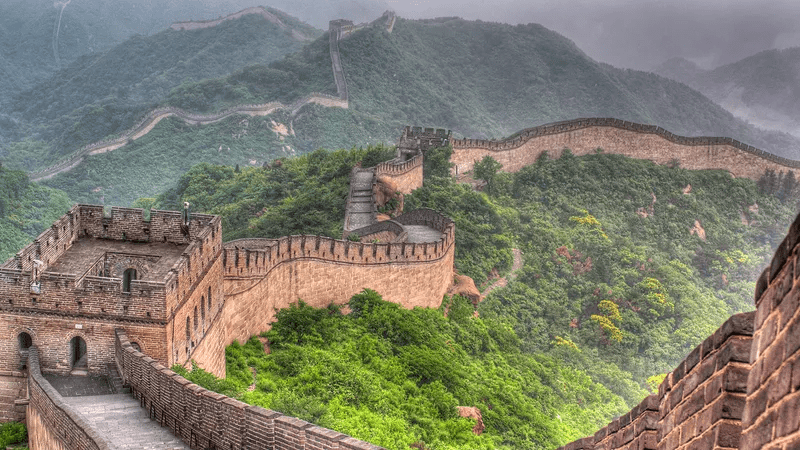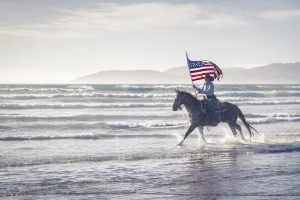Festivals in China are more than just celebrations – they are a window into the country’s soul, a testament to its enduring cultural heritage.
Deeply rooted in China’s history, these festivals have been an integral part of the nation’s identity for millennia. They are tied to the lunar calendar and agricultural cycles, reflecting the ebb and flow of the seasons and the rhythms of rural life.
Let’s explore some of the most significant festivals that showcase the essence of Chinese culture.
- 8 Major Festivals Celebrated in China
- 1. New Year’s Day (Yuandan)
- 2. Harbin Ice and Snow Festival
- 3. Chinese Spring Festival
- 4. Qingming Festival (Tomb-Sweeping Day)
- 5. Labour Day
- 6. Dragon Boat Festival (Duanwu)
- 7. Mid-Autumn Festival
- 8. National Day
- Food Traditions During Festivals
- Tips for Festival Goers
- Why Choose OneVasco?
- FAQs
8 Major Festivals Celebrated in China
1. New Year’s Day (Yuandan)
While overshadowed by the Spring Festival, New Year’s Day on the Western calendar is gaining popularity in China, especially among younger generations.
-
Date: January 1 (Gregorian calendar).
-
Location: Celebrated across all of China. Major cities like Beijing, Shanghai, and Guangzhou host grand events.
-
Key Highlights: – Fireworks displays in major cities.
– Public celebrations in parks and squares.
– Special performances and countdown events in iconic locations.
– Family gatherings and outings to mark the start of the new year.

2. Harbin Ice and Snow Festival
Though not a traditional Chinese festival, the Harbin Ice and Snow Festival is a spectacular winter event that attracts visitors from around the world.
-
Date: Annually from January 5 to February (exact closing date varies, typically mid-February).
-
Location: Harbin, Heilongjiang Province, China.
-
Key Highlights: – Massive Ice Sculptures: Intricate creations made from ice blocks from the Songhua River.
– Ice and Snow World: A dazzling display of illuminated ice castles and sculptures.
– Snow Sculpture Art Expo: Stunning snow artwork on Sun Island.
– Ice Lantern Festival: Colorful ice lanterns light up Zhaolin Park.
– Winter Sports: Activities like ice skating, sledding, and dog sledding.

3. Chinese Spring Festival
The Spring Festival, also known as Chinese New Year, is the most important of all the cultural festivals in China. Marking the beginning of the lunar new year, it’s a time for family reunions, feasts, and age-old traditions.
-
Date: 29th Jan, 2025
-
Location: Celebrated nationwide across China. Major festivities occur in cities like Beijing, Shanghai, Xi’an, and Chengdu.
-
Key Highlights: Family Reunions: Traditional family dinners, especially on New Year’s Eve, featuring dishes like dumplings and fish.
– Fireworks and Firecrackers: Used to drive away evil spirits.
– Red Decorations: Homes adorned with red lanterns, couplets, and paper cuttings.
– Dragon and Lion Dances: Traditional performances symbolizing good luck.
– Lantern Festival: Marks the end of the celebrations with colorful lantern displays and eating tangyuan (sweet glutinous rice balls).

4. Qingming Festival (Tomb-Sweeping Day)
The Qingming Festival is a traditional Chinese holiday for honoring ancestors and cleaning their graves. It also marks the arrival of spring, celebrated with outings and kite flying.
-
Date: April 4th or 5th each year (determined by the solar calendar).
-
Location: Observed nationwide in China, particularly in rural areas where families visit ancestral tombs.
-
Key Highlights:Tomb-Sweeping: Cleaning and decorating ancestral graves.
– Offerings: Burning incense, paper money, and leaving food for ancestors.
– Spring Outings: Flying kites, enjoying nature, and seasonal foods like qingtuan (sweet green rice balls).

5. Labour Day
May Day, or International Workers’ Day, is a public holiday in China that celebrates the contributions of workers. It is marked by leisure activities, travel, and events honoring labor achievements.
-
Date: May 1st annually.
-
Location: Celebrated across China, especially in major cities like Beijing, Shanghai, and Guangzhou.
-
Key Highlights: Public Celebrations: Parades, cultural performances, and ceremonies to honor workers.
– Travel: A popular time for domestic and international tourism due to the holiday.
– Relaxation: Parks and recreational areas are crowded with families enjoying the break.
– Shopping Discounts: Retailers often offer special promotions during this time.
6. Dragon Boat Festival (Duanwu)
The Dragon Boat Festival, or Duanwu, is a traditional Chinese holiday commemorating the ancient poet Qu Yuan. It features boat races, festive foods, and rituals to ward off evil spirits.
-
Date: The 5th day of the 5th month in the Lunar calendar (usually falls in June).
-
Location: Celebrated nationwide, with famous dragon boat races in areas like Guangzhou, Hong Kong, and Hangzhou.
-
Key Highlights: – Dragon Boat Races: Competitive races with teams rowing elaborately decorated boats.
– Eating Zongzi: Glutinous rice dumplings wrapped in bamboo or reed leaves.
– Ward Off Evil: Hanging calamus and mugwort leaves, and wearing fragrant sachets to repel bad spirits.
– Commemoration of Qu Yuan: Rituals and offerings in memory of the poet.

7. Mid-Autumn Festival
The Mid-Autumn Festival, also known as the Moon Festival, is a traditional Chinese celebration of the harvest and family unity. It is marked by moon gazing, lantern displays, and enjoying mooncakes that symbolize togetherness.
-
Date: The 15th day of the 8th month in the Lunar calendar (usually falls in September or October).
-
Location: Celebrated across China, with notable festivities in cities like Beijing, Guangzhou, and Suzhou.
-
Key Highlights: Harvest Celebrations: Acknowledging the season’s bounty and giving thanks.
– Mooncakes: Eating and gifting mooncakes filled with sweet or savory fillings.
– Lantern Displays: Beautifully lit lanterns decorate homes and public spaces.
– Moon Gazing: Families gather to admire the full moon, symbolizing completeness.
8. National Day
National Day in China celebrates the founding of the People’s Republic of China. It is a major patriotic holiday marked by grand parades, performances, and a week-long break for travel and festivities.
-
Date: October 1st annually.
-
Location: Celebrated nationwide, with significant events in Beijing, particularly at Tiananmen Square.
-
Key Highlights: – Grand Parades: Military and civilian parades in Tiananmen Square showcasing China’s strength.
– Fireworks Display: Spectacular fireworks in major cities like Beijing and Shanghai.
– Patriotic Events: Ceremonial activities and performances celebrating China’s history.
– Golden Week: A 7-day public holiday encouraging travel and tourism across the country.

Food Traditions During Festivals
Food plays a central role in Chinese festivals, with each celebration having its unique culinary traditions:
|
Festival |
Traditional Foods |
|---|---|
|
Spring Festival |
Dumplings (jiaozi), sticky rice cakes (niangao), fish dishes |
|
Lantern Festival |
Sweet rice dumplings (yuan xiao or tang yuan) |
|
Dragon Boat Festival |
Zongzi (sticky rice dumplings wrapped in bamboo leaves) |
|
Mid-Autumn Festival |
Mooncakes filled with sweet bean or lotus seed paste |
|
Qingming Festival |
Green rice balls (qingtuan), sweet rice cakes |
|
Double Ninth Festival |
Chongyang cakes, chrysanthemum tea |
When participating in festivals in China, be sure to sample these traditional delicacies to fully immerse yourself in the culinary customs.
Tips for Festival Goers
-
Be prepared for weather changes (e.g., cold at Winter festivals like the Harbin Ice Festival) and bring comfortable shoes for walking.
-
Understand and follow cultural practices, such as giving red envelopes (hongbao) during Chinese New Year or offering sacrifices at tombs during Qingming Festival.
-
Knowing simple Chinese phrases like “Happy New Year” (新年快乐 – Xīnnián kuàilè) or “Happy Mid-Autumn Festival” (中秋节快乐 – Zhōngqiū jié kuàilè) can go a long way in showing respect.
-
Participate in food traditions, like enjoying mooncakes during the Mid-Autumn Festival or zongzi (rice dumplings) during the Dragon Boat Festival.
-
For certain festivals, wearing traditional or themed clothing (such as red for Chinese New Year) can enhance your experience and show respect for the culture.
-
While mobile payment systems like Alipay and WeChat Pay are widely used, some smaller vendors may still prefer cash, especially in rural areas.
Why Choose OneVasco?
OneVasco makes visa applications effortless. Our expert team manages the entire process, allowing you to focus on your journey.
Enjoy stress-free travel with fast visa approvals.
-
Expert and Personalized Support
-
Efficient and Hassle-Free Process
-
Real-Time Tracking and Updates
-
Transparent Communication
-
Trusted by Millions
FAQs
1. Which is the most famous festival in China?
The Spring Festival, also known as Chinese New Year, is the most famous and significant festival in China. It marks the beginning of the lunar new year and is a time for family reunions, feasts, and cultural traditions.
2. What foods are commonly associated with Chinese festivals?
Each festival has its traditional foods, such as dumplings (jiaozi) and sticky rice cakes (niangao) for the Spring Festival, sweet rice dumplings (yuan xiao or tang yuan) for the Lantern Festival, zongzi (sticky rice dumplings wrapped in bamboo leaves) for the Dragon Boat Festival, and mooncakes for the Mid-Autumn Festival.
3. What is the significance of red decorations during festivals?
Red is considered an auspicious color in Chinese culture, symbolizing good luck, joy, and prosperity. During festivals like the Spring Festival, red decorations such as lanterns, couplets, and paper-cuts adorn homes and public spaces.
4. Are there any unique regional festivals in China?
Yes, in addition to the major national festivals, China has many regional and ethnic festivals that showcase the diversity of its culture. Examples include the Torch Festival of the Yi people in Sichuan and the Water Splashing Festival of the Dai people in Yunnan.
5. What are some interesting customs observed during the festivals?
Festival customs vary widely but often include activities like dragon and lion dances, setting off firecrackers, enjoying festive foods, and participating in cultural performances and rituals.





















